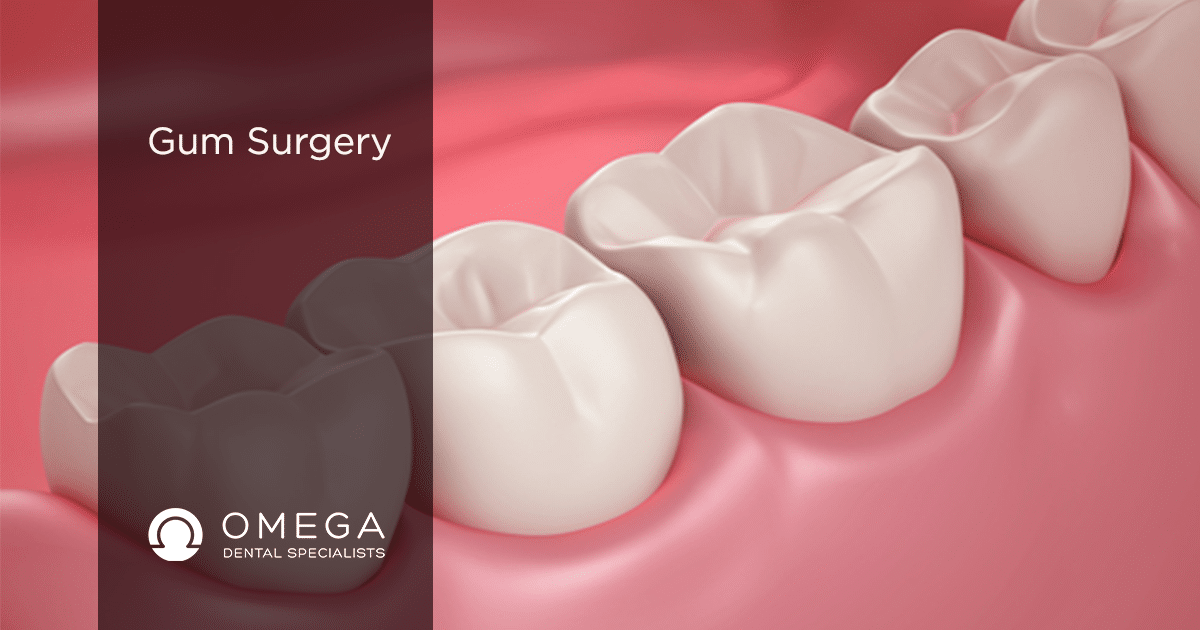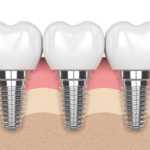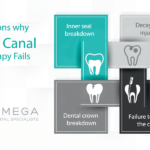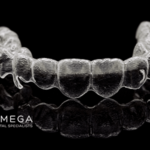Gum Surgery Cost In Houston

Table of Contents
What Is The Gum Surgery Cost In Houston?
The average cost of gum surgery will typically cost anywhere between $500 to as much as $5000. Today dentists see many different types of conditions that require some level of gum surgery. A kind of situation in particular that ultimately damages gums is a progressive periodontal disease. This dental problem often requires gum surgery. There are many other kinds of surgical procedures related to the gums, including gum contouring, laser surgery, gum lift surgery, as well as reconstructive surgical procedures.
The cost of gum surgery depends mostly on the severity of the condition at hand. The cost of gum surgery can also rely on the patient’s geographical location and the specific dentist performing the surgical procedure. Keeping these simple facts in mind, These prices can fluctuate considerably depending on the amount of work that is required as well as how many return visits are needed. It cannot be overstressed that the unique characteristics of each particular case will largely dictate the cost of the actual procedure.
In most instances, a typical price range would be from $3000-$5000 for general gum surgery. Costs may also vary depending on the type of gum surgery being performed. As mentioned earlier, there are many different types of surgical procedures designed to correct a broad range of gum disorders, problems, or conditions. Gum lift surgery, for example, can range in price up to about $3000. The many factors already discussed that can have an impact on this cost would also apply to gum lift surgery. In more complex cases where extensive surgery and additional return visits are required, the cost could easily range up to $8000 or more for gum surgery. Talking with your dental care provider or oral surgeon is always the first step in ascertaining the exact cost of the type of procedure needed.
What is Involved in Gum Graft Surgery?
What is gum graft surgery and why should it not be taken lightly? If your periodontist has mentioned to you that you need gum graft surgery do not be alarmed. This procedure is in place to protect your teeth from receding gums which is the reason why you may need this procedure. Most people aren’t aware that their gums have receded because it happens over time. Receding gums happen when supporting tissue that around the tooth pulls away from it causing the tooth’s root to show. As a result, from this phenomenon, you may have to undergo surgery depending on its severity. Do not worry this surgery is not as scary as it seems.
What are the types of gum surgery?
Here are 3 different types of gum graft procedures that are usually performed.
What is A Connective Tissue Grafts?
A connective tissue graft is a procedure that is most commonly performed. It starts with cutting a flap of skin from the palate and removing the tissue from under the flap and stitching it to the gum tissue around the root of the tooth. When the connective tissue is removed from underneath the flap of the palate the flap will be stitched back on.
What is A Free Gingival Graft?
What connective tissue grafts and free gingival grafts have in common is that tissue from the roof of the mouth is used. What makes free gingival graft surgery different is that this one doesn’t make a flap and remove the tissue under the top layer of the flesh. What happens is that tissue from the palate is used then attached to the gum. Free gingival grafts are mostly used by those who have thin gums and need an extra tissue to enlarge the gums.
What is Pedicle Grafts?
Pedicle grafts differ due to tissue not being taken from the palate. The tissue is grafted from gum to the tooth. The only part of the flap is cut away in a way that one edge stays attached. Next, the gum is pulled over the exposed tooth root and is sewn to stay in place. This option is for those who have plenty of gum tissue near the tooth.
Who Is A Candidate For Gum Surgery?
A gum graft can be pursued by anyone who wants to improve their smile or fix the problem on receding gums. Receding gums can cause your teeth to look different than they previously did. It can cause your teeth to look longer and taller than they are. Sensitive teeth have been a widespread problem for those with receding gums. When eating hot or cold foods the nerves in their teeth react in a way that causes them discomfort and pain when in contact with these temperatures. Gum graft surgery fixes the problem of receding gums so that tooth loss will not occur and prevents future dental problems.
Gum graft surgery is a surgical procedure in which the roots of the teeth are covered due to receding gums. Gum tissue is taken from your palate which is the root of your mouth or another substance is used to cover the root. This method is not limited to just one tooth. If needed, this procedure can be done to several teeth. Gum graft surgery comes with benefits such as covering the exposed roots to protect them from decay and tooth loss.
What are the benefits of gum surgery?
Getting gum graft surgery is not necessarily a bad thing. The procedure fixes your smile as well as its appearance. It can play a part in reducing major dental issues and reducing tooth decay and loss. After recovery from the surgery, you will no longer have problems that relate to receding gums such as sensitive teeth. One thing to look forward to after the procedure is the ability to grow bone and tissue back on its own due to your periodontist or gum doctor using tissue-stimulating proteins during the procedure or after.
How Long Is Recovery Time After Gum Surgery?
Here are a few valuable tips regarding recovery:
Gum grafts are a procedure that will allow you to go home the same day. Most of the time you will be given a sedative for the procedure. It is in your best interest to have someone drive you home the day of surgery.
Your periodontist or specialist will give you instructions to follow regarding the healing process. You will receive instructions on what to eat, medications to take, and any other questions you have.
Do NOT floss or brush the gum line until the area has completely healed. If you do you will compromise the surgery and it can lead to bleeding as well as complications.
Your periodontist may provide you with a special mouthwash to rinse your mouth to remove excess plaque while your gums heal. If you do not receive a mouthwash you can rinse your mouth with a solution of salt and water.
The amount of pain that is to be expected greatly depends on the type of gum graft that will be taking place. If you have no tissue removed from your palate, then discomfort will be little to none. If the tissue is removed from your palate it is common to experience discomfort that lasts for a few days. The good news is that you can use an over the counter medication for inflammation and pain. You can also take a prescription for pain if you have the okay from your specialist.
Are There Any Extra Costs Involved With Gum Surgery?
The answer to this question is quite simple that if there are additional aspects of the surgery needed, then there will likely be an extra charge. The good news is that gum surgery is, in most cases, completely painless thanks to proper local or general anesthesia. Also, the recovery time related to gum surgery or periodontal surgery is relatively rapid when compared to other types of oral surgery procedures. That said, in most instances, the only additional cost involved with standard or routine gum surgery includes the cost of antibiotics as well as the expense of pain medication and other remedies used to address swelling of the gums. Preventing infection and reducing pain is an important part of any oral surgery.
Also, a follow-up appointment or visit may be necessary to ensure that the patient is healing as anticipated. A follow-up dental care appointment will be no different than any other type of dental office visit or examination. For example, the cost usually involved with a simple office visit can range anywhere from $80 to $180 per visit. As a note, more severe cases that demand additional work may incur additional fees as compared to traditional, non-complicated, and routine surgical procedures.
What Is Usually Included In The Cost Of Gum Surgery?
The costs outlined here typically include the use of the medical facility as well as the dental equipment needed to complete the surgical procedure successfully. Also, because gum surgery is considered to be a minor surgical procedure, in most instances, local anesthesia will be used in an outpatient setting. This serves to keep the cost down for patients while still resulting in the highest level of professional dental care possible.
For gum surgery, the surgical procedure itself involves the oral surgeon folding the gums back so that access to the root surface is made possible. Once the surgeon can reach the root surface, and all bacterial deposits are removed, and bone grafting that is required can then be completed. In cases where gummy smile surgery is performed, a simple incision is involved so that the orientation of the gums is effectively altered. Gummy surgery will usually range in cost between $3000 and $8000 depending on the overall complexity of the patient’s case.
One of the best ways to avoid surgery in the first place is to ensure that periodontal disease does not occur. This can significantly reduce the requirements for having to have gum surgery. In other cases, a natural deformity may require a surgical procedure. This is particularly the case of gummy smile surgery. Whatever the case may be, always talk with your dental care provider, oral surgeon, and insurance company to understand precisely what is involved with your unique and particular situation.
What are the common risk factors for periodontal disease?
Periodontal disease is frequently caused by excessive bacterial plaque building up on the teeth and ultimately affecting the gums. It is typically caused by a build-up of a sticky film called plaque beneath the gum line. The bacteria in the plaque causes the gums to become red, swollen, and even bloody. When this disease goes untreated, it may lead to compromised gum health, alveolar bone loss, or even potentially tooth loss. Inflammation from the bacteria, as well as other habits or environmental conditions—referred to as risk factors—can increase the likelihood of developing gum disease
- Age: Almost half of Americans 30 and older have some form of gum disease. In adults 65 and older, prevalence rates increase to 70.1 percent.
- Smoking/tobacco use: Smoking causes bone loss and gum deterioration. The more cigarettes smoked per day, the higher the risk of gum disease.
- Genetics: Genetics often play a role in gum disease, as it usually occurs in members of the same family.
- Stress: Stress can make it harder for the body to fight off infection, including gum disease.
- Medication: Gum disease can be a side effect of some medications like oral contraceptives and antidepressants. Medications that cause dry mouth can increase the risk of gum disease.
- Poor nutrition and obesity: A poor diet can make it harder for the body to fight off infection. Obesity may increase the risk of gum disease.
- Poor oral hygiene: Lack of regularly brushing your teeth or flossing can cause bacterial build-up and plaque formation along the gum line.
- Other systemic diseases: Recent studies have linked gum disease to diabetes, cardiovascular disease, rheumatoid arthritis, and erectile dysfunction. These and other systemic diseases could interfere with the body’s inflammatory system and may worsen the condition of the gums.
See a periodontist or dentist once a year for a comprehensive periodontal evaluation to assess gum health. When experiencing any of the risk factors mentioned, have your periodontist or dentist look for early signs of periodontal disease. Making yourself aware of these risk factors prevent getting periodontal disease and keep your teeth healthy.
How Do Periodontists Assess Risk For Periodontal Disease?
Your periodontist, dentist, or dental hygienist will perform a comprehensive periodontal evaluation, which examines your:
- Teeth
- Plaque
- Gums
- Dental occlusion
- Bone structure
- Risk factors
A periodontal evaluation will assess how healthy your mouth is. Based on the results, the periodontist will determine the best course of treatment for you. If you have a progressive periodontal disease, gum surgery is one of the treatment options.





